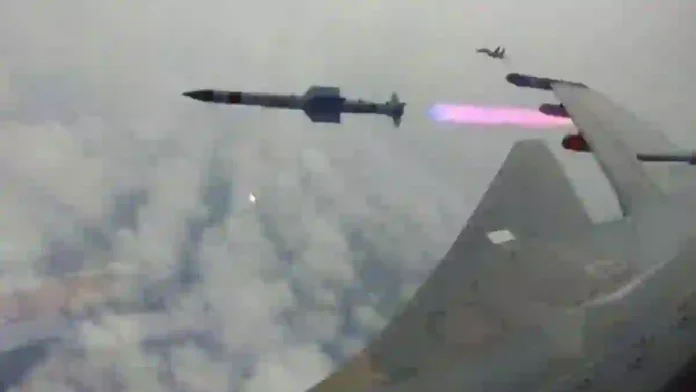Hindustan Aeronautics Limited (HAL) is set to conduct the final weapons firing trials of the indigenous TEJAS MK-1A fighter jet in September 2025. This crucial phase in the Light Combat Aircraft (LCA) program will serve to validate the advanced weapons systems integration and operational combat capabilities of the TEJAS MK-1A before its full induction into the Indian Air Force (IAF).
The trials mark the concluding stage of extensive evaluations that began following the TEJAS MK-1A’s maiden production flight on March 28, 2024, which lasted approximately 18 minutes.
The TEJAS MK-1A, an upgraded version of the earlier TEJAS MK-1, incorporates significant enhancements across avionics, radar, electronic warfare (EW) capabilities, and weaponry, aiming to meet the stringent operational requirements laid out by the IAF.
The aircraft is equipped with advanced systems such as the Astra MK-1 beyond visual range (BVR) missile, an indigenous Unified Electronic Warfare Suite (UEWS) comprising radar warning receivers and self-protection jammers, and an advanced fly-by-wire flight control system.
These upgrades make the MK-1A a potent and highly capable fourth-plus generation fighter designed to bolster India’s air defence strength.
Preceding the final weapons firing trials, the TEJAS MK-1A has already undergone rigorous extra firing trials and EW system evaluations intended to validate the integration and functionality of these sophisticated subsystems.
The delivery of the latest F-404-IN20 engines from GE Aerospace by March-April 2025 has enhanced the aircraft’s performance potential, which earlier relied on reserve Category B engines from prior production batches due to supply delays.
The final weapons firing trials in September will assess various weapons configurations on the aircraft, including live firing of air-to-air missiles, air-to-ground precision-guided munitions, and other onboard armaments. This step is critical to demonstrate that the TEJAS MK-1A meets all combat readiness and safety parameters required by the IAF for operational deployment.
Read- ARDE Reportedly Developing Advanced Gatling Gun System For The Indian Army And Air Force
Read- Russia Offers 5% Oil Discount To India Amid U.S. Tariff Escalations
Coinciding with these trials, the Indian Air Force is preparing to raise its first TEJAS MK-1A squadron at the Nal Air Force Station in Bikaner, Rajasthan, a strategic frontline base in the western sector. Pilots currently operating on earlier TEJAS MK-1 variants are undergoing intensive training to transition to the MK-1A platform. The initial squadron is expected to have four TEJAS MK-1A fighters plus a trainer aircraft, with additional machines slated to join by March 2026.
With a contract for 83 units worth approximately ₹36,468 crore and negotiations underway for more, TEJAS MK-1A represents a substantial step towards indigenous aeronautical self-reliance. Its deployment will significantly boost the IAF’s operational capability, especially in the context of regional security dynamics involving China and Pakistan.
The TEJAS MK-1A’s advanced avionics, longer combat range, and enhanced survivability ensure that it is well-positioned to be a front-line asset complementing India’s existing fleet and bolstering deterrence and combat readiness.
The HAL-conducted final weapons firing trials scheduled for September 2025 are a pivotal milestone validating the TEJAS MK-1A’s combat systems and readiness for induction.
This phase marks the fulfilment of years of indigenous design, development, and testing efforts, heralding the arrival of a world-class, domestically developed fighter jet tailored to the operational needs of the Indian Air Force and strengthening India’s strategic air defence capabilities.
IDN (With Agency Inputs)
Agency




